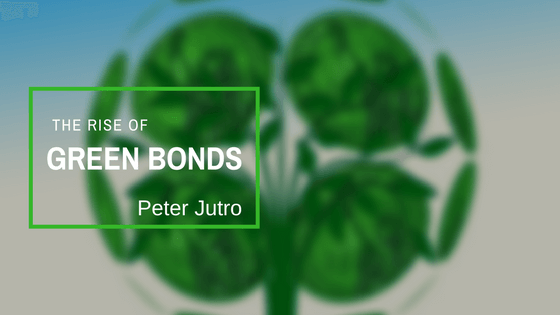For those of you unaware of the term conservation finance, it refers to the practice of raising and managing capital in efforts to support land, water, and resource conservation. The options for conservation finance vary in numerous ways. They vary by the source of funds: public, private, or nonprofit. They also vary by type; they can take the form of loans, grants, tax incentives or market mechanisms. The final variation is by scale, as options can range from the local to the national level, to the international. A friend of mine, Dr. Tom Lovejoy, introduced the concept of debt-for-nature swaps which are one kind of Government conservation finance. Such swaps help aid environmental sustainability efforts, particularly in developing nations.
The idea of tapping into government resources to provide aid for sustainable living is starting to gain more traction, in particular through a concept that was developed in 2007: green bonds. Green Bonds are liquid investment assets that raise capital for any general conservation efforts and environmentally stable practices. These assets play a crucial role in engaging institutional market participants in the transition to low-carbon and climate-resilient development and growth. In 2014, the Green Bond Principles were formed as a set of voluntary process and reporting guidelines for the use of green bonds. These principles have been at the forefront of the effort to promote voluntary codes for green finance. Green Bonds support a variety of sustainable development projects, including, among others, infrastructure and transportation.Sustainable urban development is becoming a necessary goal, as it is expected that seventy percent of the world’s population will be living in cities by 2050. According to the Green City Bond Coalition, green bonds will have a vital role in that transition.
Since their first issuance in 2007 by the World Bank, green bonds have been looked at as a potentially significant force to help in achieving carbon-reducing goals. The market for these green bonds started to gain traction in 2013 when they were issued by Electricité de France and Bank of America. The availability of such bonds has continued to increase, particularly with dramatic growth in 2016. The issuance of green bonds in 2016 reached $95.1 billion – double the amount issued in 2015, and now other countries are starting to join the trend. Within the first two months of 2017, an additional $19 billion was issued. Investors in green bonds also see the benefits that can be offered from a risk-management perspective as they add green bonds to fixed-income portfolios. According to Benjamin Bailey of Everence Financial, the green-bond market has been expanding to the extent that environmentally friendly options are now widely available across the fixed-income market.
While many positives come with the rise of green bonds, it’s important to note that there is still the possibility that obstacles may appear. Martina Macpherson of ESG and S&P Dow Jones Indices notes that pace of this market will depend on policy and regulatory factors, as well as on marketing conditions and financing trends. Other potential issues include underdeveloped domestic bond markets, issuers’ views on costs versus benefits, a mismatch between projects, bonds, and institutional investors, and a lack of commonly accepted green standards and definitions.
Despite some of these obstacles, the evidence of growing interest in green bonds suggests that possibilities for growth are still high for the coming years, as the market is expected to hit $206 billion in total issuance for 2017.

